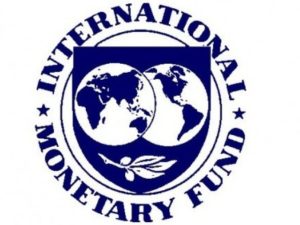The International Monetary Fund is a global organisation founded in 1944 in the post-war economic settlement which included the Bretton-Woods system of managed exchange rates. J.M.Keynes and Harry Dexter White both played an important role in its development.
Its primary aim is to help stabilise exchange rates and provide loans to countries in need. Nearly all members of the United Nations are members of the IMF with a few exceptions such as Cuba, Lichtenstein and Andorra.
- The IMF is independent of the World Bank although both are United Nations agencies and both are aiming to increase living standards. The World Bank concentrates on long-term loans to developing countries.
Functions of IMF
- International monetary cooperation.
- Promote exchange rate stability.
- To help deal with balance of payments adjustment
- Help deal with economic crisis by providing international coordination – loans, plus advice.
What the IMF does in practice
1. Economic surveillance and monitoring. IMF produces reports on member countries economies and suggests areas of weakness / possible danger (e.g. unbalanced economies with large current account deficit/excess debt levels.. The idea is to work on crisis prevention by highlighting areas of economic imbalance. A list of IMF reports on member countries are available at IMF Countries
2. Loans to countries with a financial crisis. The IMF has $300 billion of loanable funds. This comes from member countries who deposit a certain amount on joining. In times of financial/economic crisis, the IMF may be willing to make available loans as part of a financial readjustment.
- The IMF has arranged more than $180 billion in bailout packages since 1997.
- In 1976, the IMF gave a loan to the UK as the Pound Sterling was coming under pressure. The loan came with conditions to reduce the budget deficit and raise interest rates to defend the value of the Pound. See: IMF Loan to UK 1976.
- In 2010/11 the IMF played a major role in the bailout to the Greek economy, which involved a total loan of up to $110 billion.
3. Conditional loans/structural adjustment. When giving loans, the IMF usually insist on certain criteria being met. These can include policies to reduce inflation (tightening of monetary policy)
- Reduce inflation (tightening of monetary policy)
- Deficit-reducing policies (higher tax)
- Supply-side policies, such as privatisation, deregulation and improved tax collection.
- Removing price controls
- Free trade – removing tariff barriers
- Devaluation of currency to reduce current account deficit.
- See also: Washington Consensus
4. Technical assistance and economic training. The IMF produce many reports and publications. They can also offer support for local economies. More on technical assistance of IM
How is the IMF Financed?
The IMF is financed by member countries who contribute funds on joining. They can also increase this throughout their membership. The IMF can also ask its member countries for more money. IMF financial resources have risen from about $50 billion in 1950 to nearly $300 billion last year, sourced from contributions from its 183 members.This initial amount depends on the size of the countries economy. E.g. the US deposited the largest amount with the IMF. The US currently has 16% of voting rights at the IMF, a reflection of its quotas deposited with IMF. The UK has 4% of IMF Voting rights. Loans at a discounted rate are also available to developing countries to ‘deal with poverty reduction.’
Special Drawing Rights SDR
The IMF uses Special drawing rights to provide a unit for the amount of foreign currency member states can draw on. SDRs are defined in terms of a basket of major currencies including Euro, Pound Sterling, Japanese yen and US Dollar.

